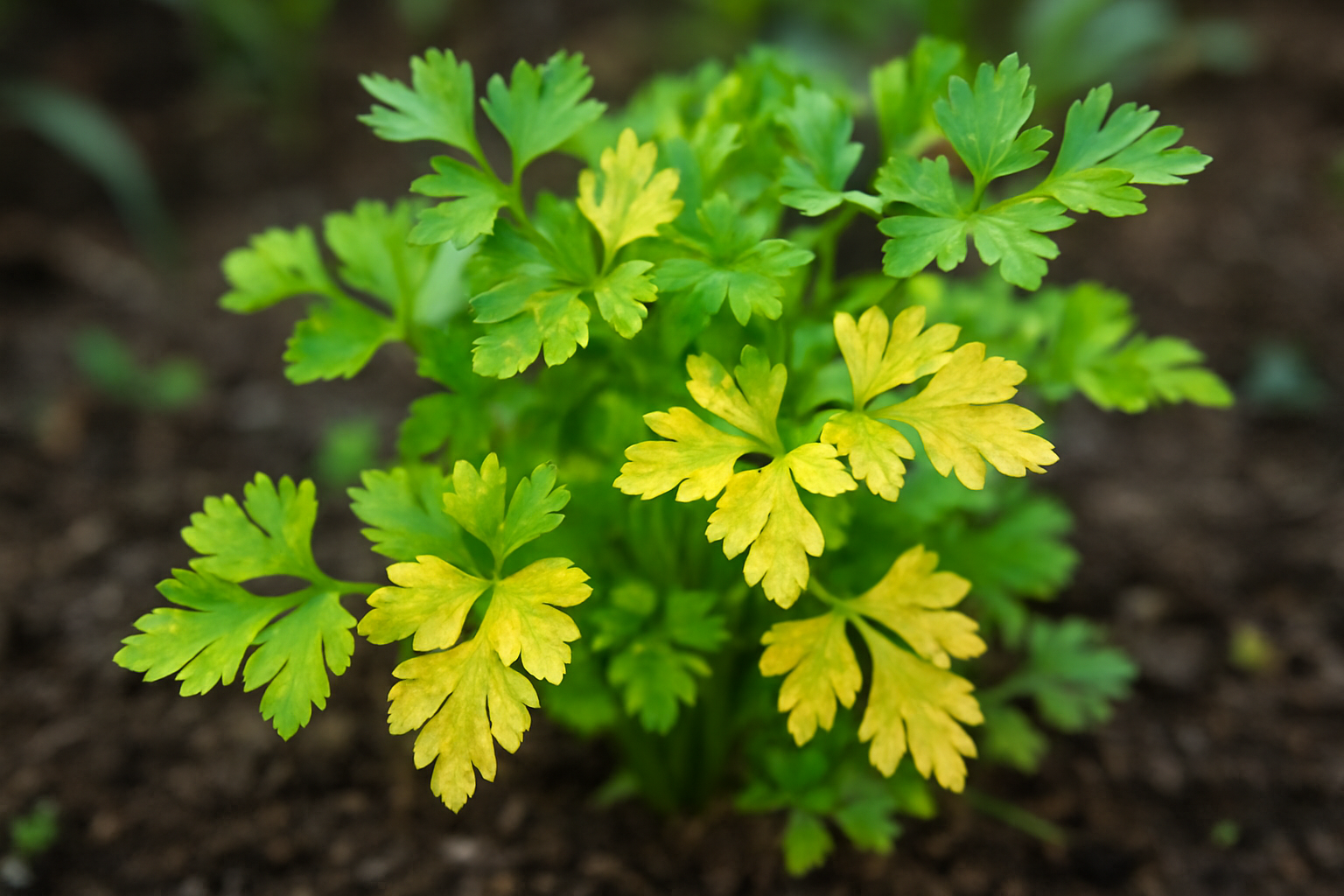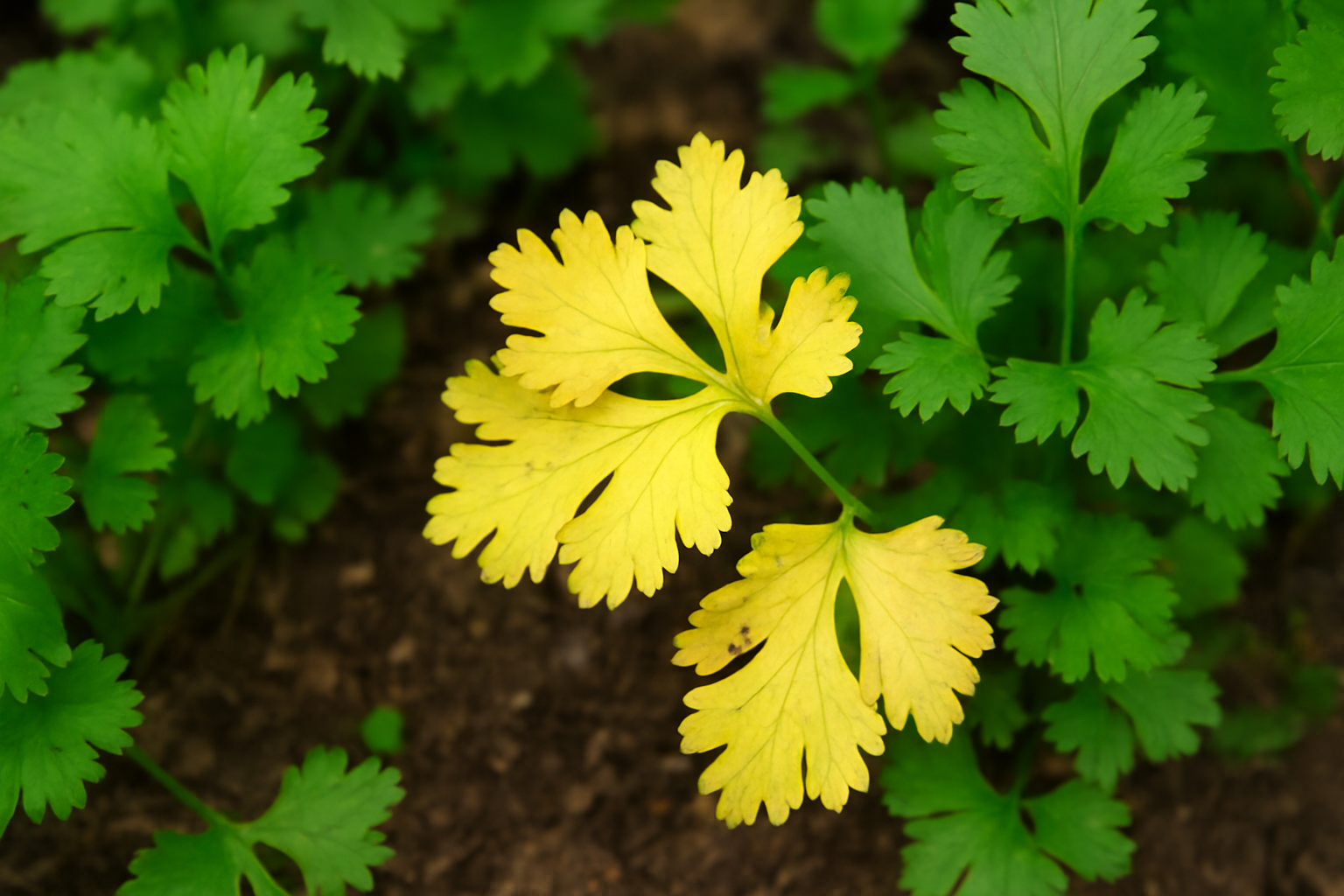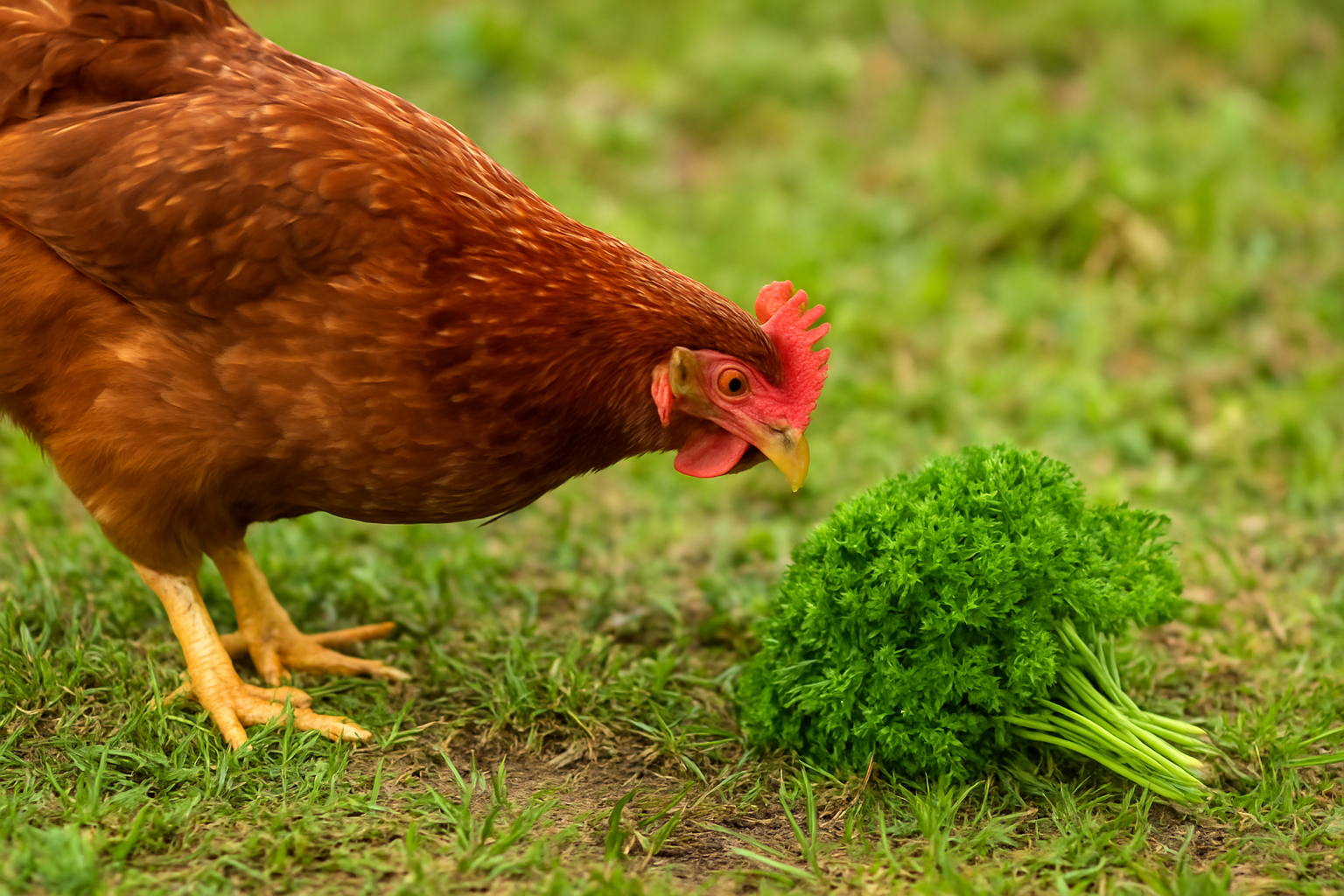If your parsley is turning yellow, you’re not alone—this is one of the most common concerns gardeners face. Yellowing leaves on parsley can signal issues ranging from overwatering and poor soil nutrition to pests or natural aging. The good news? In most cases, yellow parsley can be saved with the right care. By understanding why your parsley plant is turning yellow and what each cause really means, you’ll not only fix the problem but also keep your herb garden thriving.
In this guide, we’ll uncover the key reasons behind yellow parsley, simple remedies to bring it back to life, and whether yellowed parsley is still safe to use.
Common Reasons Parsley Leaves Turn Yellow
1. Overwatering or Poor Drainage
Parsley prefers evenly moist soil, but too much water suffocates the roots. This causes the lower leaves to yellow and sometimes drop. If your parsley plant is turning yellow, check if the soil feels soggy or compacted.
💡 Quick fix: Water only when the top inch of soil feels dry, and make sure the pot or garden bed drains properly.
2. Underwatering or Heat Stress
On the flip side, dry soil and hot weather can also cause parsley leaves turning yellow. Without enough water, the plant cannot maintain healthy leaf growth.
💡 Quick fix: Give parsley consistent moisture, especially during summer. Mulching can help retain soil moisture.
3. Nutrient Deficiency
If parsley looks pale yellow instead of vibrant green, it may be lacking nitrogen or iron. This is common in potted plants where nutrients wash away quickly.
💡 Quick fix: Feed parsley with a balanced liquid fertilizer or compost tea every 3–4 weeks.
4. Pests and Diseases
Tiny pests like aphids and spider mites suck sap from leaves, leaving them yellow and curled. Root rot, caused by fungi in wet soil, can also lead to yellowing and stunted growth.
💡 Quick fix: Inspect leaves closely and wash off pests with a strong stream of water. Use neem oil if infestations persist. For root rot, remove infected plants and replant in fresh, well-drained soil.
5. Natural Aging of Leaves
Sometimes parsley turns yellow simply because older leaves at the base are dying off naturally. This is normal and nothing to worry about.
💡 Quick fix: Snip off older yellow leaves to encourage new, fresh growth.
Can You Use Parsley When It Turns Yellow?
A common question is: Can you use parsley when it turns yellow?
Yellow parsley is not harmful, but it loses flavor, nutrients, and texture. While it won’t make you sick, it’s better to use only the fresh green leaves for cooking. Yellow parsley can still be added to compost or used as mulch in the garden.
How to Prevent Parsley from Turning Yellow
Keeping parsley green and healthy is easier when you follow a few preventive steps:
- Water consistently but avoid soggy soil.
- Fertilize lightly every few weeks.
- Ensure good airflow to reduce pests and fungal issues.
- Harvest regularly to encourage fresh leaf production.
FAQs
Why is my parsley plant turning yellow?
Most often, parsley yellows due to overwatering, underwatering, or lack of nutrients. Pests, diseases, and natural leaf aging can also play a role.
Can I save parsley once it has turned yellow?
Yes, in many cases. Trim yellow leaves, adjust watering, and feed your plant. With proper care, new healthy green leaves will regrow.
Why has my parsley turned yellow in the fridge?
Parsley turned yellow in the fridge usually means it wasn’t stored properly or was kept too long. Cold air can dehydrate leaves, causing discoloration. Storing parsley in a damp paper towel inside an airtight container helps maintain freshness and prevent yellowing.
Is yellow parsley safe to eat?
Yellow parsley is generally safe to eat if the leaves are simply discolored and not slimy or foul-smelling. However, its flavor and nutrients are reduced compared to fresh green parsley. For the best taste and health benefits, use bright green leaves and discard yellow ones.
Why do I see parsley yellow spots on the leaves?
Parsley yellow spots are often a sign of fungal disease, pest damage, or nutrient deficiencies. Overwatering, poor air circulation, and lack of nitrogen can also cause spotting. Removing affected leaves and improving soil health usually restores plant vitality.
Why is my parsley turning yellow in summer?
Parsley turning yellow in summer often happens due to heat stress, excessive sun exposure, or inconsistent watering. Providing partial shade, regular watering, and nutrient-rich soil can keep parsley green and healthy during hot weather.
Final Thoughts
If you’ve noticed your parsley plant turning yellow, don’t worry—this is a common issue for gardeners. By adjusting watering habits, improving soil nutrients, and keeping pests in check, you can restore your parsley’s vibrant green color. And while parsley turned yellow may not taste as good in cooking, a little extra care will ensure your next harvest is full of fresh, flavorful leaves.




